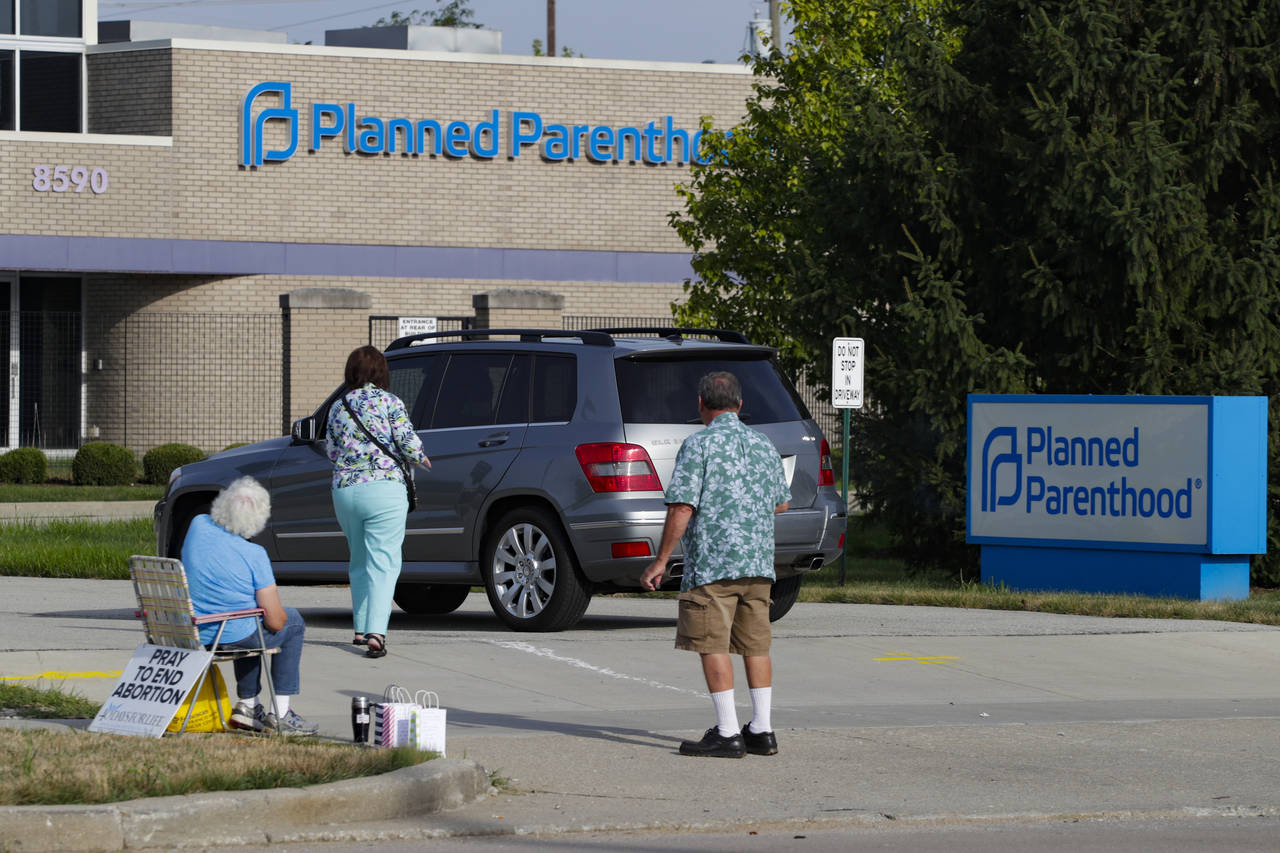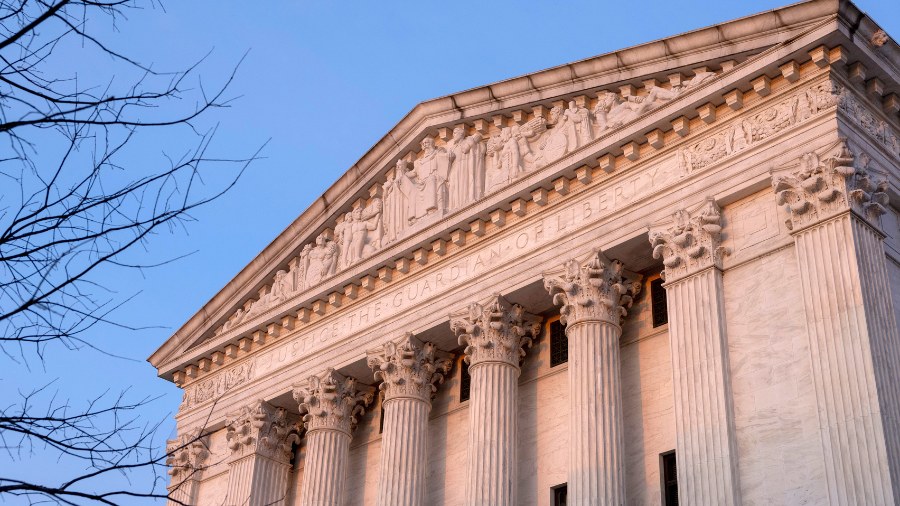EXPLAINER: States scramble as US abortion landscape shifts
Sep 15, 2022, 3:04 AM | Updated: 4:04 pm

FILE - Abortion protesters attempt to hand out literature as they stand in the driveway of a Planned Parenthood clinic in Indianapolis, on Aug. 16, 2019. Almost three months after Roe v. Wade was overturned, the landscape of abortion access is still shifting significantly in some states. Changing restrictions and litigation in neighboring Indiana and Ohio this week illustrate the whiplash for providers and patients navigating sudden changes in what is allowed where. (AP Photo/Michael Conroy, File)
(AP Photo/Michael Conroy, File)
COLUMBUS, Ohio (AP) — Almost three months after Roe v. Wade was overturned, the landscape of abortion access is still shifting significantly in some states, sometimes very quickly.
Changing restrictions and litigation in neighboring Indiana and Ohio this week illustrate the whiplash for providers and patients navigating sudden changes in what is allowed where.
Sister clinics who just weeks ago were sending patients from Ohio, where most abortions were banned, to Indiana, where the procedure was allowed, have now flip-flopped roles after the two states’ access restrictions reversed, at least temporarily.
Here is a deeper look at the current state of the shifting national landscape:
WHAT CHANGED THIS WEEK?
An Ohio judge blocked enforcement on Wednesday of the state’s ban on most abortions after fetal cardiac activity is detected. The ban had been in effect since shortly after the U.S. Supreme Court overturned Roe on June 24. The judge’s action allows abortions to resume in pregnancies up to 20 weeks’ gestation for 14 days.
Then, on Thursday, a new Indiana law took effect that bans most abortions, marking its status as the first state in the nation to approve new abortion restrictions since the high court’s abortion ruling. Republican Gov. Eric Holcomb signed the ban into law Aug. 5.
Under the new law, abortions are permitted only in cases of rape and incest before 10-weeks post-fertilization; to protect the life and physical health of the patient; or if a fetus is diagnosed with a lethal anomaly. A doctor who performs an illegal abortion or who fails to file required reports must lose their medical license.
HOW IS THIS AFFECTING PROVIDERS?
All seven Indiana abortion clinics lost their licenses Thursday under the state’s new law, which allows abortions to only be performed in hospitals or outpatient surgical centers owned by hospitals. More than 98% of the state’s abortions were done by those clinics in 2021.
Abortion clinics in the state told The Associated Press they will remain open to refer patients out of state, including to neighboring Ohio.
“I thought that today would be the worst day,” Dr. Katie McHugh, a provider at the Indianapolis abortion clinic Women’s Med, told the AP on Thursday. “But I think the worst day was yesterday, knowing that the patients that we saw in the office yesterday were the last ones that we would see, and knowing how much it meant for all of us that were there — the staff, the physicians and the patients — that we were able to provide that care to the last moment.”
Dr. Alison Case — who since 2020 provided medication abortions at the South Bend abortion clinic Whole Woman’s Health — will continue her work as a family practice doctor in Indianapolis.
She said she worries for the labor and delivery patients she oversees at a hospital in the city.
“I think there’s going to be more people forced to carry their pregnancies to term, so I think we’ll see more deliveries,” she said. “But I think, important to note, we’re also going to see more of these complications.”
In Ohio, clinics were preparing for a high volume of patients coming in from surrounding states following the judge’s ruling — though they realize it could be short-lived.
“Well, I never expected to be a surge state,” said Iris Harvey, president and CEO of Planned Parenthood of Greater Ohio, using the new lingo of the field. “For 14 days, we might be.”
Ohio clinics that had been prohibited from performing most abortions will resume those services beginning Friday.
HOW IS THIS AFFECTING PATIENTS?
The shifting legal landscape has required patients in affected states to regroup, sometimes repeatedly. Kellie Copeland, executive director of Pro-Choice Ohio, an abortion rights advocacy group, said some have been unable to terminate their pregnancies.
Harvey said Planned Parenthood has set up a central location for abortion requests and hired additional staff, oftentimes social workers, to help people navigate various states’ laws as they change.
McHugh said Women’s Med received “dozens” of calls Wednesday from patients who could not schedule an abortion that day due to Indiana’s 18-hour waiting period on the procedure.
“Every time it was a difficult conversation, because every time it was like breaking the news to someone that they couldn’t get their care,” McHugh said.
Lawyers were still reviewing whether patients traveling from Indiana to Ohio would be able to get anything but a surgical abortion. The two-pill regimen used in medication abortions would generally mean taking one pill in a permissive state and one in a restrictive state, the latter potentially breaking the law, providers said.
Anti-abortion groups continue to tout existing restrictions and the new ones being passed in the states in the wake of the Supreme Court’s ruling.
“Ohio is pro-life and this law was supported by the people,” said Margie Christie, president of the Right to Life Action Coalition of Ohio. “Women do not need abortion in Ohio. We have abundant resources for mothers and their children to thrive.”
WHEN WILL THE LANDSCAPE SHIFT AGAIN?
With Indiana’s ban taking effect, the nation has 13 states with current bans on abortion at any point in pregnancy and one more, Georgia, with a ban on abortions after fetal cardiac activity can be detected — usually around six weeks, often before women realize they’re pregnant.
Though it had not yet been signed by the governor, a ban approved by West Virginia lawmakers Wednesday had already prompted the state’s only abortion clinic to close, pushing potentially more patients to neighboring Ohio. Arizona’s ban is scheduled to kick in Sept. 24, with legal cases and legislative action expected to continue to change the status of abortion access of some states.
Then, on Nov. 8, abortion-related measures will be on ballots in at least five states. In California, Michigan and Vermont, voters will be asked to protect the right to abortion. In Kentucky, the question is whether to amend the state constitution to declare that it does not include the right to abortion. And Montana voters will decide on a measure to require medical care for infants born alive after an attempted abortion.
___
Reporter Geoff Mulvihill in Cherry Hill, New Jersey, contributed to this report. Arleigh Rodgers is a corps member for the Associated Press/Report for America Statehouse News Initiative. Report for America is a nonprofit national service program that places journalists in local newsrooms to report on undercovered issues. Follow Arleigh Rodgers on Twitter: @arleighrodgers
Copyright © The Associated Press. All rights reserved. This material may not be published, broadcast, rewritten or redistributed.














